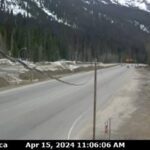Home »

Avalanche death prompts safety reminder
One person was killed in an avalanche while snowmobiling near Valemount on Saturday, Jan. 18, prompting the Canadian Avalanche Centre and BC Coroners Service to issue a public reminder that the likelihood of avalanches is greater than normal.
While everyone in the Valemount group was carrying essential safety gear-avalanche transceivers, probes and shovels-the victim, a 28-year-old Alberta man, could not be located for over three hours.
Locating an avalanche victim quickly is a critical factor in increasing his/her odds of survival.
“Avalanche victims have an 80 per cent chance of survival if found and dug out within 10 minutes of burial, but the odds drop dramatically after that,” said Canadian Avalanche Centre (CAC) executive director Gilles Valade. “After just 35 minutes, there’s less than a 10 per cent chance of survival.”
The CAC and the BC Coroners Service (BCCS) would like to remind all winter backcountry users that familiarity with their avalanche transceiver is vital.
Modern digital transceivers are very intuitive tools, but practice is still required in order to become adept with their use.
The CAC and the BCCS urge everyone who recreates in the winter backcountry to take a two-day Avalanche Skills Training course in order to learn essential safety skills, and practice them before entering avalanche terrain.
The CAC reported at 4 p.m. that current avalanche conditions in the East Kootenay are between considerable and moderate.
Avalanche conditions for the South Rockies are rated as considerable in the alpine, meaning “Dangerous avalanche conditions. Careful snowpack evaluation, cautious route finding and conservative decision making essential,” according to the CAC.
Conditions are also moderate in the treeline and below treeline.
The Purcells are rated as moderate at alpine and low at treeline and below treeline.
“Be aware of the potential for full depth avalanches due to deeply buried weak layers. Caution around convexities or areas with a thin or variable snowpack. Conditions have improved, but be mindful that deep instabilities are still present,” the CAC notes.
e-KNOW







